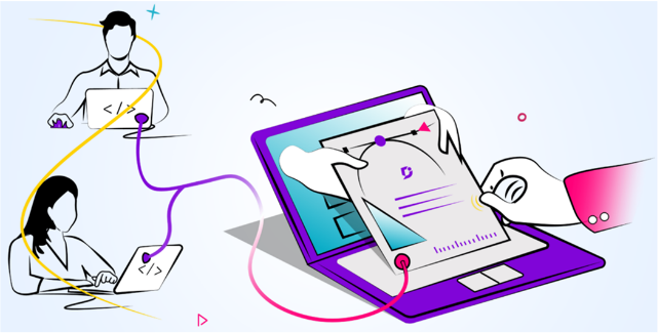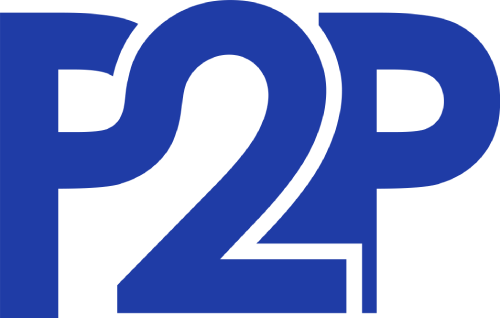 There are several documents that you need to create when outsourcing a project to service companies, especially remote organizations. These documents and a brief description are listed below.
There are several documents that you need to create when outsourcing a project to service companies, especially remote organizations. These documents and a brief description are listed below.
Note that not all of them may be applicable to your specific project and situation. What you need to create depends on the specific project and your outsourcing objectives and strategy.
1. Non-Disclosure Agreement (NDA)
It is crucial to have a signed NDA with any service provider that you work with to protect your intellectual property and confidential information. You need to have this document in place before you start disclosing any sensitive information to the service companies.
The NDA should generally cover the following areas:
- Parties involved in the agreement
- What constitutes confidential information
- How the confidential information may be used by the receiving party
- Duration of confidentiality
- Obligations of the receiving party
- Any exceptions under which the receiving party is allowed to disclose the confidential information
- Consequences of breach
- Jurisdiction and governing law
- Return or destruction of information upon termination of the agreement
- Indemnification terms
- Non-solicitation and non-compete provisions (if applicable)
- Signatures of the authorized representatives and their initials at the bottom of each page
It is essential to tailor the NDA to the specific circumstances and needs of the parties involved, as well as to consult with legal professionals to ensure that it complies with applicable laws and adequately protects confidential information. You can find online templates for an NDA on various websites including LegalZoom (https://www.legalzoom.com), Law Depot (https://www.lawdepot.com), or Rocket Lawyer (https://www.rocketlawyer.com).
2. Statement of Work (SOW)
SOW serves as a comprehensive description of the Project Requirements. It covers diverse aspects of the project including scope, objectives, features/functionality (extracted from the product requirements document), testing requirements, communication (frequency, method, status reporting), standing meetings, shared documents, and processes. To learn more about what is covered in a SOW you can visit https://p2p.jobpairing.com/homepage/2023/09/11/the-significance-of-sow-in-outsourcing-success/.
3. Service Level Agreement (SLA)
An SLA is a formal contract used between an outsourcing company (a service company) and a client (you) that outlines the exchange of services for compensation. It defines the specific levels of service, performance standards, and responsibilities expected from the service company. The SLA should generally cover the following areas:
- Introduction and Purpose (purpose of the agreement, and parties involved)
- Scope of Services (specific services that will be provided and detailed description of the services)
- Roles and Responsibilities of both parties
- List of major Deliverables and Milestones
- Service Hours and Availability
- Escalation procedures for issues
- Confidentiality and Non-Disclosure (IP ownership)
- Change Management (how changes will be managed and approved)
- Termination and exit strategy
- Payment and Billing (pricing structure, payment terms, invoicing procedures, etc.)
- Liability (liability coverage and extent of liability for each party in case of damages or losses)
- Dispute resolution process (including mediation or arbitration options, if necessary)
- Governing Law and Jurisdiction (including where any legal disputes will be resolved)
- Notices (contact information and procedures for official notifications between the parties)
- Amendments and Modifications to the agreement
- Signatures of the authorized representatives and their initials at the bottom of each page
It's crucial to tailor the service agreement to the specific needs of the outsourcing arrangement, review it thoroughly with legal counsel, and ensure that it accurately reflects the intentions and expectations of both parties. A well-crafted service agreement helps prevent misunderstandings and disputes, promotes a successful outsourcing relationship, and provides a clear framework for managing the services being outsourced. You can find online templates for a Service Agreement / SLA on various websites including LegalZoom (https://www.legalzoom.com), Law Depot (https://www.lawdepot.com), or Rocket Lawyer (https://www.rocketlawyer.com).
4. Major milestones and deliverables
A list of major milestones and deliverables documents the specific commitments made between you and the outsourcing company. These milestones are typically associated with the payment schedule and may be included in either the Statement of Work (SOW) or the Service Level Agreement (SLA), depending on how the agreement is structured.
We recommend keeping it as a separate document to facilitate easier tracking and updates, and including it as an appendix in the agreement.
5. Payment schedule
You will need to negotiate a payment plan with your outsourcing company that both parties can agree on and feel comfortable with. It's generally advisable to link each payment to a specific milestone or deliverable. Once the outsourcing company successfully reaches a milestone, you should conduct acceptance testing for that specific milestone. If the testing passes, release the corresponding funds to the outsourcing company.
We recommend keeping it as a separate document to facilitate easier tracking and updates, and including it as an appendix in the agreement.
6. Product Requirements Document (PRD)
Product (or Service) requirements document describes the features, functionality and capabilities (e.g., performance, scalability or reliability) of the product which is required for project estimation, scheduling and building the list of milestones and deliverables. We recommend that you maintain it as a separate document for easier tracking and updating, and reference it as an appendix in the SOW. To learn more about product requirements document, visit https://p2p.jobpairing.com/homepage/2023/07/25/but-thats-not-what-i-asked-for/
7. Acceptance Test Plan
We strongly recommend that you define an acceptance test plan and run it on deliverables that the outsourcing partner releases to make sure everything has been implemented as specified and to your satisfaction. An acceptance test plan typically covers expected Functionality and, where applicable, considerations for Usability, Scalability, and Performance. Additionally, we recommend sharing the acceptance test plan with your outsourcing partner so they can do some preliminary testing on the deliverable before releasing it to you.
8. Issue / Bug tracking document
 This document plays a crucial role in the successful implementation of the outsourcing project. Typically, it is a shared document that you use to report new requests or issues to the outsourcing team. In turn, they use it to receive your reports, respond to them, and provide status updates until the issue is resolved and is closed. We generally recommend a shared excel spreadsheet for reporting and tracking but every organization may have their own tools to serve this task. This document also serves as a valuable resource for conducting your regular project management meetings.
This document plays a crucial role in the successful implementation of the outsourcing project. Typically, it is a shared document that you use to report new requests or issues to the outsourcing team. In turn, they use it to receive your reports, respond to them, and provide status updates until the issue is resolved and is closed. We generally recommend a shared excel spreadsheet for reporting and tracking but every organization may have their own tools to serve this task. This document also serves as a valuable resource for conducting your regular project management meetings.
Concluding remarks
The scale and scope of the project intended to be outsourced determine which of the documents mentioned in this miniblog will be necessary for the smooth and successful completion of the project. As a rule of thumb, for smaller projects (e.g., tens of thousands of dollars, a few months of development time, and a handful of resources), we recommend keeping things streamlined and focused on an NDA, a solid SOW, and issue/bug tracking documents. However, for larger and more complex projects (e.g., hundreds of thousands of dollars, a timeframe exceeding one year, and a dozen or more resources), we recommend having most of these documents in place.

